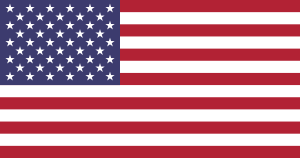Freedom to Display the American Flag Act of 2005 facts for kids
Quick facts for kids Freedom to Display the American Flag Act of 2005 |
|
|---|---|
 |
|
| United States Congress | |
| An Act to ensure that the right of an individual to display the flag of the United States on residential property not be abridged | |
| Citation | 120 Stat. 572 |
| Date passed | 4 January 2005 |
| Date enacted | 24 July 2006 |
| Bill citation | P.L. 109-243 |
The Freedom to Display the American Flag Act of 2005 is an important Act of Congress in the United States. This law makes sure that people who own homes can always show the flag of the United States on their property. It stops groups like condominium associations or neighborhood organizations from telling homeowners they cannot display the flag. The law protects a homeowner's right to proudly show the American flag.
How the Flag Act Became Law
The idea for this law, called a bill, was first introduced in the United States Congress on January 4, 2005. It was sponsored by Roscoe Bartlett and 13 other members of the House of Representatives.
Here is how the bill became a law:
- June 27, 2006: The bill was voted on and passed in the House of Representatives. This was done by a voice vote, which means members said "aye" or "no" instead of a formal count.
- July 17, 2006: The bill then moved to the Senate. It passed there by unanimous consent, meaning everyone agreed to it.
- July 24, 2006: Finally, President George W. Bush signed the bill. Once the President signs a bill, it officially becomes a law.

All content from Kiddle encyclopedia articles (including the article images and facts) can be freely used under Attribution-ShareAlike license, unless stated otherwise. Cite this article:
Freedom to Display the American Flag Act of 2005 Facts for Kids. Kiddle Encyclopedia.

